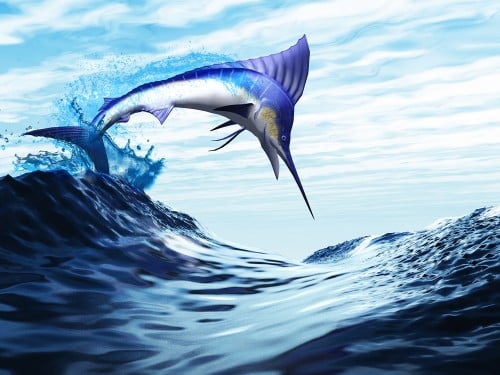Israeli research brings up surprising findings about building and breaking down bone

Our bones may seem hard and unchanging, but the truth is that they are constantly changing. In almost all animals that have bones, they consist of three types of cells: cells that build the bone, osteoblasts, cells that break it down, osteoclasts, and a third type simply known as bone cells, osteocytes. These cells sense the load situation on the bone, and activate the other two groups to strengthen the bone or replace part of it in the process of breaking down and building. To better understand the exact role of the osteocytes in the process, researchers at the Hebrew University's Faculty of Agriculture, Food and Environment asked to examine the situation in a certain group of gram fish, which do not have such cells.
Since the building and breaking down processes of the bone are influenced in part by the load on it, the team of researchers asked the laboratory for bone biomechanics, led by Prof. Ron Shachar, to examine an extreme case. That is to say - to find an object that is subjected to as much load as possible, so it is likely that construction and disassembly processes are taking place in it, or at least there is a need for them.
Live on their sword
The ideal candidate for the study was the swordfish (Xiphias gladius). These are very large fish, whose length can reach four meters and more, and their weight - hundreds of kilograms. These fish boast a long and sharp front bone, and when they swim at a dizzying speed of tens of kilometers per hour, they use it to vigorously hit their prey, fish or squid, and stun it before it is devoured in their jaws. This bone is undoubtedly under a lot of stress, so it would be an excellent candidate for research. However, breeding swordfish for research purposes is prohibited due to animal protection laws. What is allowed, ironically, is the hunting of such fish. A Shahar research student went to swordfish fishing competitions, and after the weighing of the fish was finished, and the hunted made their way to the pans, she managed to get their heads, and bring them to the laboratory in Florida, with which the Israeli researchers work in cooperation.
swim without, feel with
The researchers examined the condition of the bone in the swords of the fish in depth using different methods, and came to an unequivocal conclusion, which is published today in the American Academy of Sciences PNAS: in these bones, there is a transition of bone cells (that is, processes of breakdown and construction), even though they do not have osteocytes, which are supposed to feel the load on the bone and report it to the other cells. "This proves that the conclusion that without osteocytes there can be no processes of bone turnover, is simply not true," says Shahar. "It could be that there are other cells that do the role attributed to them, or other means to do it, and it could be that the osteocytes themselves have other roles that we don't know about." What further deepens the mystery regarding the role of osteocytes are evolutionary findings: today most researchers agree that in the distant past, the ancestors of today's gram fish did have osteocytes, but they disappeared during their evolution, and the fish apparently "learned" to manage without them.
medical importance
One of the most problematic and least understood diseases in older people is bone depletion, osteoporosis, which affects millions of people around the world. "Our finding casts doubt on the centrality of osteocytes in the bone depletion process," says Shahar. "Although it does not have a direct medical application, it may contribute to the understanding of an important medical process, and with the help of a better understanding of the problem, it may also be possible to improve the treatment."

One response
The prevailing wisdom is that a bone maintains its shape or changes it according to the loads imposed on it. The hypothesized mechanism of osteocytes, the importance of which was questioned in this paper was supposed to maintain/change the state of bone.
However, there are, and also in the human body, important bones that are not burdened and yet they do not disappear or even lose some of their stiffness. The bones of the skull, for example.
That's why it's worth re-examining the conventional wisdom. It is possible that there are parallel mechanisms dealing with the maintenance of the bone, some relying on load testing and some on other methods that serve other needs, arising from a required structure such as a closed dome and such as the sharpness of the blade of the swordfish.